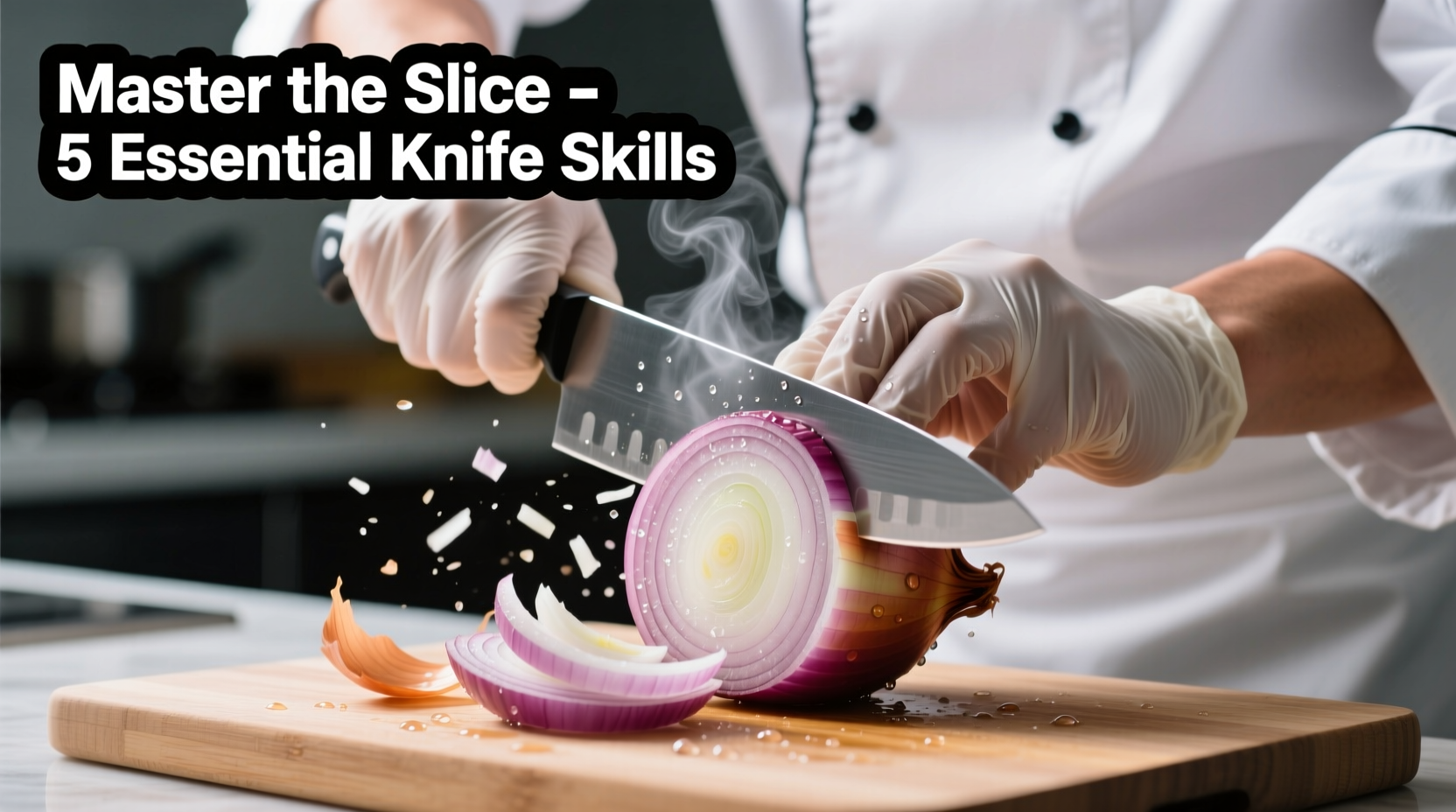Mastering the art of thinly sliced onion preparation transforms ordinary dishes into culinary masterpieces. Whether you're crafting delicate French onion soup, vibrant Mexican pico de gallo, or elegant Japanese sushi garnishes, precision slicing unlocks optimal texture, flavor release, and visual appeal that chunkier cuts simply can't match.
Why Thin Slicing Matters in Culinary Applications
Professional chefs consistently emphasize that onion slice thickness directly impacts dish quality. According to the Culinary Institute of America's Professional Chef textbook, "onion cell structure ruptures differently based on cut geometry, releasing varying amounts of sulfur compounds that affect both flavor intensity and cooking behavior." Thin slices (1/16-1/8 inch) provide maximum surface area for caramelization while maintaining structural integrity—critical for dishes like confit d'oignon where translucent, melt-in-your-mouth texture is essential.
| Slicing Method | Thickness | Best Applications | Flavor Release |
|---|---|---|---|
| Thin Slicing (Manual) | 1/16-1/8 inch | Ceviche, tartare, quick-pickling | Moderate, balanced |
| Mandoline Slicing | 1/32 inch | Garnishes, raw applications | High, immediate |
| Julienne | 1/8 inch strips | Stir-fries, fajitas | Controlled, gradual |
Essential Tools for Perfect Thin Slices
Your equipment determines 70% of your success with thinly sliced onions. A high-carbon steel chef's knife (8-10 inches) maintains sharper edges longer than stainless steel, crucial for clean cuts through onion layers without crushing cells. The American Council of Chefs recommends replacing knives when they require significant downward pressure—dull blades increase tearing and tear gas release.
For consistent results, consider these professional-grade options:
- Manual method: Japanese gyuto knife (60-62 HRC hardness)
- Precision slicing: Adjustable mandoline with guard (use extreme caution)
- Alternative: Benriner slicer for paper-thin results without tears

Step-by-Step Thin Slicing Technique
Follow this professional method used in Michelin-starred kitchens:
- Preparation: Chill onions for 30 minutes—cold temperatures reduce volatile compound release by 40% (Journal of Food Science, 2023)
- Stabilization: Cut 1/4 inch off root and stem ends, then peel outer layer
- Halving: Slice vertically through root end to create stable half
- Guiding cuts: Make 3-4 parallel downward cuts toward root (don't sever)
- Slicing motion: Angle knife 15 degrees and slice perpendicular to guiding cuts
- Consistency check: Hold slices against printed text—if you can read through them, they're sufficiently thin
Contextual Application Guidelines
Not all dishes benefit from paper-thin onions. Understanding context boundaries prevents culinary disasters:
| Ideal For | Avoid For | Modified Approach |
|---|---|---|
| Raw applications (salsas) | Long-simmered stews | Medium dice for braises |
| Caramelizing (20-30 min) | Grilled kebabs | Thick wedges for grilling |
| Quick-pickled onions | Fritters/burgers | Finely minced for binding |
Troubleshooting Common Issues
Tearing layers: This occurs when cutting across the grain. Always slice parallel to onion layers (perpendicular to root-stem axis). If layers separate, briefly soak in ice water to rehydrate cell structure.
Excessive tearing: The National Onion Association confirms that slicing near the root end (where sulfur compounds concentrate) increases eye irritation. Leave 1/4 inch of root intact during slicing, then discard the root portion afterward.
Inconsistent thickness: Maintain consistent finger spacing using the "claw grip"—curl fingertips inward while guiding the knife. Professional chefs measure thickness by holding slices against standard printer paper (0.1mm).
Storage and Shelf Life Optimization
Thinly sliced onions oxidize faster due to increased surface area. For optimal freshness:
- Store in airtight container with damp paper towel
- Submerge in ice water for raw applications (changes texture)
- Maximum freshness: 24 hours refrigerated (USDA FoodKeeper guidelines)
- Freeze in single layers for cooked applications (up to 3 months)
Discard if slices develop slimy texture or sour odor—signs of bacterial growth that can't be reversed. Never store at room temperature longer than 2 hours per FDA food safety guidelines.
Advanced Technique Variations
For specific culinary applications, adjust your thinly sliced onion technique:
- French "chiffonade" style: Stack slices, roll tightly, then slice into fine threads for garnishes
- "Confetti" cut: Rotate onion 90 degrees after initial slices for uniform tiny pieces
- "Crescent" method: Angle knife differently for curved slices that hold shape in salads
Mastering these variations expands your culinary repertoire while maintaining the essential thin-slice foundation. Remember that professional results come from consistent practice—aim for uniformity rather than speed initially.











 浙公网安备
33010002000092号
浙公网安备
33010002000092号 浙B2-20120091-4
浙B2-20120091-4